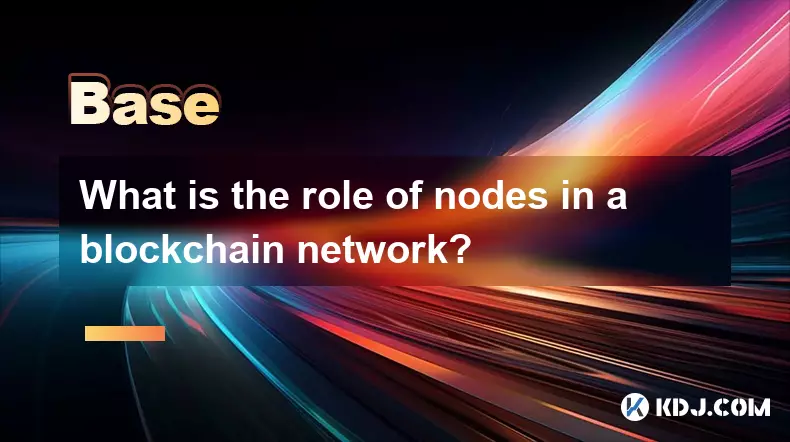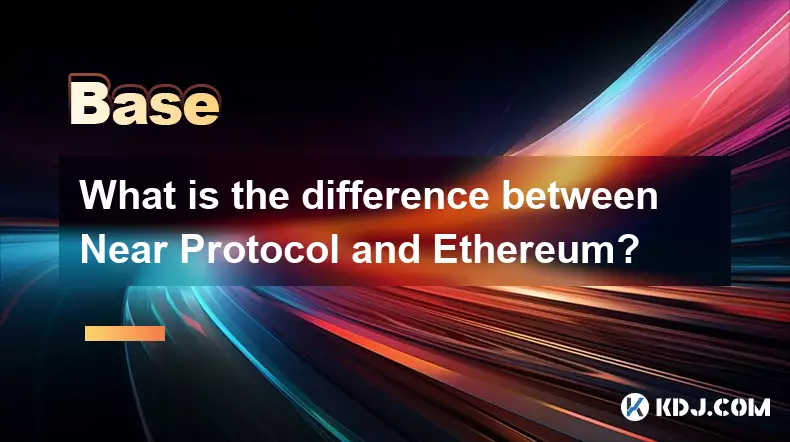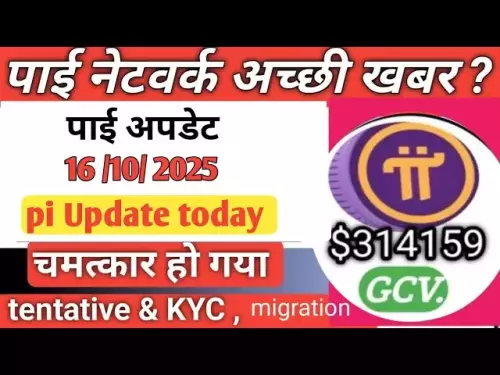-
 bitcoin
bitcoin $110918.433029 USD
-1.69% -
 ethereum
ethereum $3996.872473 USD
-2.43% -
 tether
tether $1.000594 USD
0.00% -
 bnb
bnb $1178.871834 USD
-2.38% -
 xrp
xrp $2.413973 USD
-3.47% -
 solana
solana $194.341461 USD
-4.24% -
 usd-coin
usd-coin $0.999963 USD
-0.03% -
 tron
tron $0.320092 USD
0.92% -
 dogecoin
dogecoin $0.196919 USD
-3.42% -
 cardano
cardano $0.669585 USD
-3.63% -
 hyperliquid
hyperliquid $37.485952 USD
-3.58% -
 ethena-usde
ethena-usde $1.000026 USD
-0.02% -
 chainlink
chainlink $18.018220 USD
-5.13% -
 bitcoin-cash
bitcoin-cash $523.879267 USD
-2.41% -
 stellar
stellar $0.324655 USD
-3.67%
What is the role of nodes in a blockchain network?
Nodes are the backbone of blockchain, ensuring decentralization, validating transactions, and maintaining network security through consensus.
Oct 14, 2025 at 01:01 am

Understanding the Backbone of Blockchain: Nodes
1. Nodes serve as the foundational infrastructure in any blockchain network, ensuring data integrity and network resilience. Each node stores a copy of the entire blockchain ledger, allowing for transparency and decentralization across the system. This distributed nature prevents single points of failure and reduces vulnerability to attacks.
2. When a new transaction is initiated, it is broadcasted to multiple nodes. These nodes validate the transaction based on predefined consensus rules such as proof-of-work or proof-of-stake. Only after validation is the transaction grouped into a block and added to the chain by miners or validators.
3. Different types of nodes exist within a blockchain ecosystem, including full nodes, light nodes, and mining nodes. Full nodes download the complete blockchain and verify every transaction independently. Light nodes rely on full nodes for information, making them faster but less secure. Mining nodes participate in creating new blocks and require substantial computational power.
4. The geographic distribution of nodes enhances censorship resistance. No central authority can alter transaction history because changes must be accepted by the majority of nodes. This trustless environment enables peer-to-peer transactions without intermediaries.
5. Running a node contributes to network health and security. Individuals or organizations that operate nodes help maintain decentralization, which is a core principle of blockchain technology. In some networks, node operators may receive rewards for their services, especially in proof-of-stake systems where staking is involved.
Nodes Ensure Consensus and Trustless Verification
1. Consensus mechanisms depend heavily on nodes to agree on the state of the blockchain. Whether it's Bitcoin’s Nakamoto consensus or Ethereum’s Casper protocol, nodes communicate with each other to confirm that all copies of the ledger are identical.
2. In proof-of-work blockchains, nodes reject invalid blocks even if they are computationally expensive to produce. This enforcement of rules happens automatically through software logic embedded in each node’s client.
3. If a malicious actor attempts to rewrite transaction history, honest nodes will detect the inconsistency and discard the fraudulent chain. This self-correcting behavior relies on the widespread presence of independently operated nodes.
4. Nodes also play a role in relaying transactions and blocks across the network. They form connections with other nodes in a peer-to-peer topology, enabling rapid propagation of information while minimizing latency.
5. The more nodes participating in the network, the harder it becomes to execute a 51% attack. A high node count increases the cost and complexity of gaining control over the majority of the network’s hash rate or stake.
Maintenance and Accessibility of Node Infrastructure
1. Setting up a node requires technical knowledge and resources such as storage, bandwidth, and processing power. For example, running a full Bitcoin node demands over 400GB of disk space and continuous internet connectivity.
2. Cloud-based node services have emerged to lower entry barriers. Platforms like AWS or dedicated providers offer managed node solutions, allowing developers and businesses to access blockchain data without maintaining physical hardware.
3. Open-source clients such as Bitcoin Core or Geth enable users to run nodes on personal computers. These tools come with configuration options for advanced users who want to customize privacy settings or connection limits.
4. Some blockchain projects incentivize node operation through token rewards. Decentralized finance (DeFi) protocols and layer-2 networks often distribute governance tokens to participants who run validator nodes.
5. Community-driven initiatives promote node deployment in underserved regions to improve global network distribution. These efforts aim to prevent centralization in specific jurisdictions and enhance overall robustness.
Frequently Asked Questions
What happens if a node goes offline?A temporary disconnection does not permanently affect the network. Once the node reconnects, it synchronizes with the latest blockchain state by downloading missed blocks from peers. However, prolonged downtime may reduce its reliability as a data source.
Can anyone run a blockchain node?Yes, most public blockchains allow anyone to run a node provided they meet the technical requirements. Permissionless networks like Bitcoin and Ethereum encourage open participation to strengthen decentralization.
Do nodes earn cryptocurrency?In some networks, yes. Mining nodes in proof-of-work systems earn block rewards and transaction fees. In proof-of-stake systems, validator nodes that lock up coins can receive staking rewards for participating in consensus.
How do nodes differ from wallets?Wallets manage private keys and facilitate sending/receiving transactions, while nodes validate and relay those transactions. A wallet can connect to a node to access blockchain data, but not all wallets include node functionality.
Disclaimer:info@kdj.com
The information provided is not trading advice. kdj.com does not assume any responsibility for any investments made based on the information provided in this article. Cryptocurrencies are highly volatile and it is highly recommended that you invest with caution after thorough research!
If you believe that the content used on this website infringes your copyright, please contact us immediately (info@kdj.com) and we will delete it promptly.
- Meme Coin Mania: MoonBull, FLOKI, and SHIB – What's the Buzz?
- 2025-10-16 09:10:00
- Pepeto's Presale Success: Riding the Crypto Bull Run Wave
- 2025-10-16 08:30:01
- Affordable GPUs for Gamers: A 2025 Deep Dive
- 2025-10-16 10:25:12
- Coinbase, BNB, and Token Listings: A New Era?
- 2025-10-16 09:25:16
- Secure Enclave, Flow, and Launch: What's the Buzz?
- 2025-10-16 08:30:01
- Crypto Technologies Blast Through: A New Era Dawns on the Digital Frontier
- 2025-10-16 08:30:01
Related knowledge

How do decentralized identity (DID) solutions work?
Oct 14,2025 at 11:36pm
Understanding Decentralized Identity in the Blockchain Ecosystem1. Decentralized identity (DID) solutions are built on blockchain networks, allowing i...

What is the difference between Near Protocol and Ethereum?
Oct 15,2025 at 08:01am
Near Protocol and Ethereum: Core Architectural Differences1. Near Protocol operates on a sharded blockchain architecture known as Nightshade, which al...

What does it mean for code to be "open source" in crypto?
Oct 12,2025 at 01:54pm
Understanding Open Source in the Cryptocurrency Ecosystem1. In the context of cryptocurrency, open source refers to software whose code is publicly ac...

What is the purpose of a "testnet"?
Oct 12,2025 at 09:01am
Understanding the Role of Testnets in Blockchain Development1. A testnet serves as a parallel version of a blockchain network, designed specifically f...

How to avoid phishing scams in crypto?
Oct 13,2025 at 06:18pm
Understanding Common Crypto Phishing Tactics1. Cybercriminals frequently use fake websites that mirror legitimate crypto exchanges or wallet platforms...

What is the difference between single-collateral and multi-collateral Dai?
Oct 12,2025 at 05:18pm
Understanding Single-Collateral Dai1. Single-Collateral Dai (SCD) was the original version of the Dai stablecoin launched by MakerDAO in 2017. It allo...

How do decentralized identity (DID) solutions work?
Oct 14,2025 at 11:36pm
Understanding Decentralized Identity in the Blockchain Ecosystem1. Decentralized identity (DID) solutions are built on blockchain networks, allowing i...

What is the difference between Near Protocol and Ethereum?
Oct 15,2025 at 08:01am
Near Protocol and Ethereum: Core Architectural Differences1. Near Protocol operates on a sharded blockchain architecture known as Nightshade, which al...

What does it mean for code to be "open source" in crypto?
Oct 12,2025 at 01:54pm
Understanding Open Source in the Cryptocurrency Ecosystem1. In the context of cryptocurrency, open source refers to software whose code is publicly ac...

What is the purpose of a "testnet"?
Oct 12,2025 at 09:01am
Understanding the Role of Testnets in Blockchain Development1. A testnet serves as a parallel version of a blockchain network, designed specifically f...

How to avoid phishing scams in crypto?
Oct 13,2025 at 06:18pm
Understanding Common Crypto Phishing Tactics1. Cybercriminals frequently use fake websites that mirror legitimate crypto exchanges or wallet platforms...

What is the difference between single-collateral and multi-collateral Dai?
Oct 12,2025 at 05:18pm
Understanding Single-Collateral Dai1. Single-Collateral Dai (SCD) was the original version of the Dai stablecoin launched by MakerDAO in 2017. It allo...
See all articles


























![Web3 Crypto Market Morning Report: The market is in decline, altcoins have fallen by more than 5%, Binance compensation has been received, and Memes on the Bnb chain have collectively plummeted [Vic TALK Issue 1444] Web3 Crypto Market Morning Report: The market is in decline, altcoins have fallen by more than 5%, Binance compensation has been received, and Memes on the Bnb chain have collectively plummeted [Vic TALK Issue 1444]](/uploads/2025/10/16/cryptocurrencies-news/videos/web-crypto-market-morning-report-market-decline-altcoins-fallen-binance-compensation-received-memes-bnb-chain-collectively-plummeted-vic-talk-issue/68f043c9c8b44_image_500_375.webp)















































